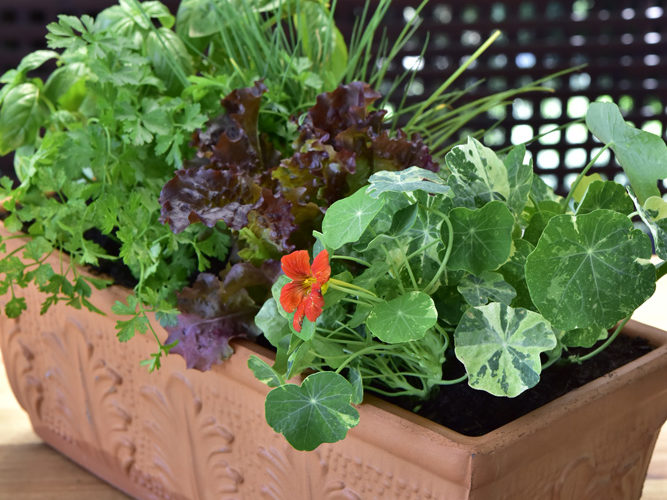Nothing beats the natural, authentic flavour of herbs, especially if you grow them yourself.
Window-boxes planted up with herbs are not just for windows, they can be used just about anywhere, even as a table decoration.
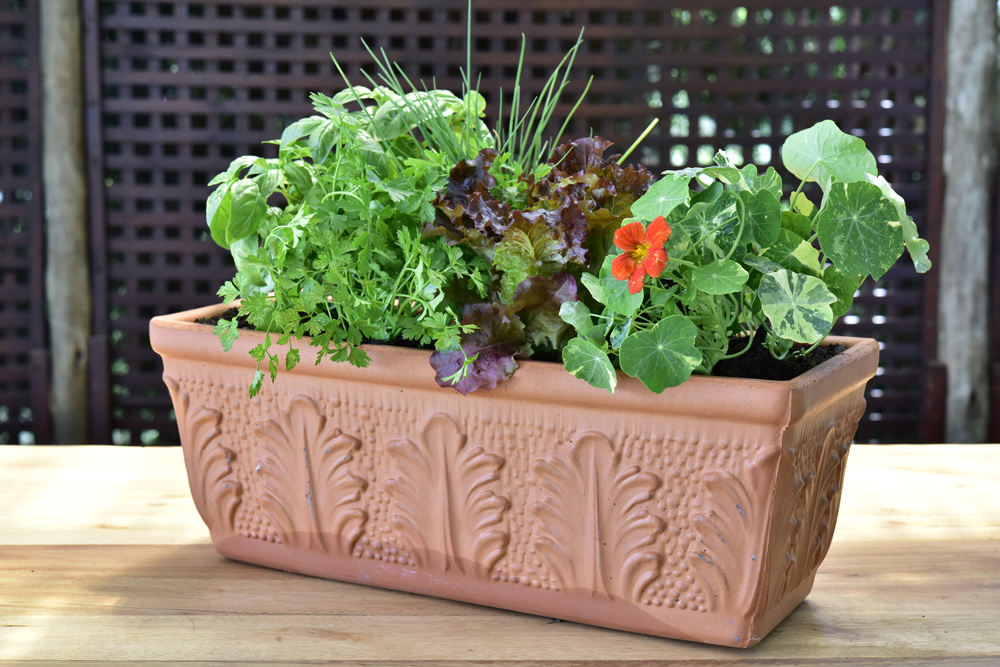
Useful tips
- Most small herbs, like thyme, oregano, sage, and even rosemary, have shallow root systems suitables for a window box. Choose a container that is at least 15cm deep. Avoid shallower containers as they won’t be able to hold enough water for the plants, especially on very hot days.
- If using a terracotta container, soak it in water for a day before planting up. Terracotta acts like a sponge and absorbs all the water from the potting medium. But if it is saturated before planting, the pot will not absorb the water and the soil will stay moist.
- Before planting, water all the herbs in their pots or bags. This makes it easier to remove the herbs from the pots, reduces transplant shock and the resistance that may occur when the plant is put into a different growing medium.
- Use a good quality herb potting mix and incorporate a controlled release fertiliser (like Vigo-longer) into the potting soil for a gradual release of nutrients.
READ MORE: How to make a water garden in a container
The herbs selected for this step-by-step by Rachel Diago of Healthy Living Herbs are salad herbs that can also be used in cooking and even for making herbal teas: sweet basil, chives, Italian parsley, mint, red leaf lettuce and nasturtiums. She used a container from Lifestyle Home Garden.
STEP ONE
Half-fill the window box with herb potting mix and place the herb (still in its pot) to check the final planting height, which should be about 3cm from the top. No need to put stones or gravel at the bottom because this can block drainage holes.
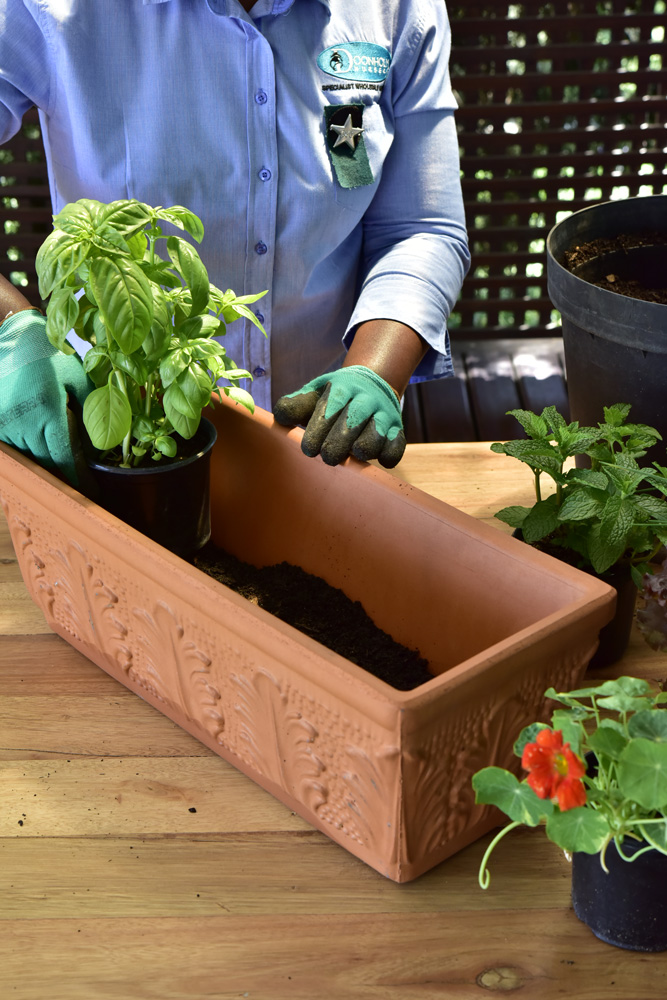
STEP TWO
Ease the sweet basil out of the pot by first squeezing the pot and then tilting it upside down (with your fingers protecting the plant) so that the root ball slides out of the pot. Do not pull the plant out of the pot as this could damage its roots.
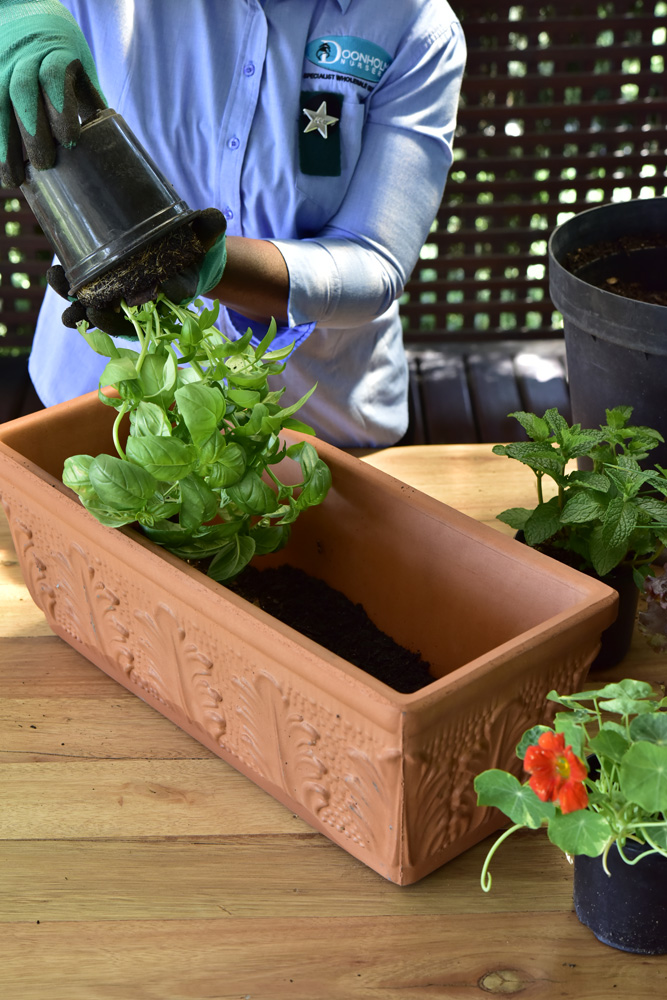
STEP THREE
Fill in with the other herbs, and the red leaf lettuce, by taking them out of their pots and positioning them in the planter, with low growing herbs (mint, nasturtium) on the outer edges so that they can trail over the side.
YOU MIGHT LIKE: 3 Herb container ideas
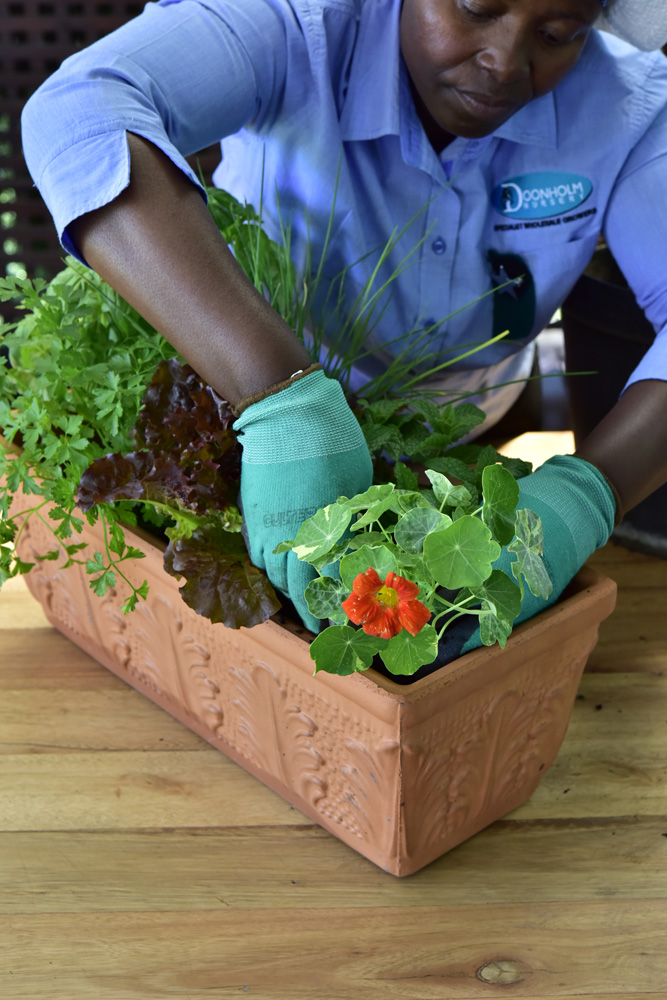
STEP FOUR
Once the herbs are in place, fill in with potting soil, making sure that the plant is at the same level in the container as it was in the pot. Firm the soil around the plants and water gently to settle the soil.
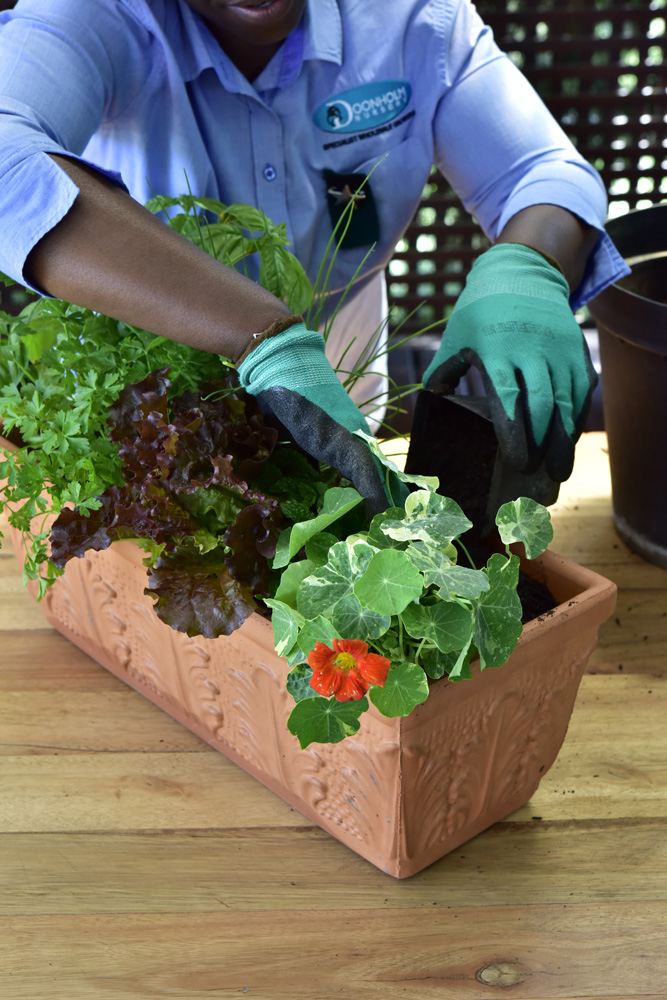
How to use herbs:
Sweet basil: add fresh leaves to salads and salad dressings. Use to flavour tomato-based sauces, vegetables, cheese and egg dishes, chicken, fish and meat, adding towards the end of cooking. Basil tea improves digestion and acts as a mild anti-depressant.
Chives: snip into salads and vegetable, cheese, egg and meat dishes as a garnish. Use in salad dressings.
Italian parsley: Use in salads, dressings and sauces, chop and add towards the end of slow-cooked meat and poultry dishes. A very nutritious herb, especially rich in vitamin C. Drink parsley tea to aid digestion and as a tonic.
Mint: Add to salads, desserts and cool drinks. Use in a tea to aid digestion after a meal. It also lifts fatigue and stimulates the appetite.
Nasturtium: both the flowers and leaves are edible and have a piquant and peppery flavour. Add to salads and sandwiches, egg dishes, herb dips, herb vinegars, vegetable dishes and desserts.

